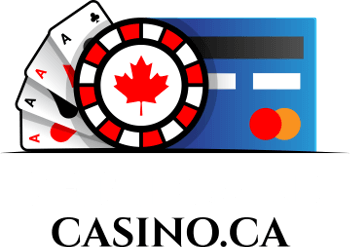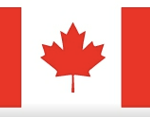How to Play Creights in Canada
 Creights (aka Crates) is one of the most unique and fast-paced fun party games you’ll ever play. It’s a speed version of the classic children’s game, Crazy Eights, with a lot more rules to confuse and confound you—which is the whole point! In fact, the name Creights is an amalgamation of the title, Crazy Eights, implying that the speed of the game mashes everything together.
Creights (aka Crates) is one of the most unique and fast-paced fun party games you’ll ever play. It’s a speed version of the classic children’s game, Crazy Eights, with a lot more rules to confuse and confound you—which is the whole point! In fact, the name Creights is an amalgamation of the title, Crazy Eights, implying that the speed of the game mashes everything together.
How to Play Creights Card Game
All you need is a standard deck of 52 cards and some good friends. Most games are played with 3 to 5 players, although you can increase to a double deck (104 card) for 5-8 player games.
Length of Game
Creights is a speed game, but can be a very long one by standard rules. How much time you have should determine whether you play the short version, or the standard long version.
A standard game has 15 rounds (hands) of play. For the first hand, players are dealt 8 cards. The second hand is 7 cards, then 6, then 5, and so on, until the eighth round, when players receive just 1 card each. Then the count rises in reverse order; 2 cards each, 3 cards, and so on back up to 8.
In the short version, only the first half of the hands are played, starting with 8 cards each and working down to 1 card each.
Depending on the number of players, a long game can last anywhere from 1 to 3 hours; a short game about half that time.
How Cards Alter Game Play
Most cards in Creights effect the game in one way or another. In this way, it’s similar to the special cards in Uno. These are the most important rules to learn and memorize, because being a speed game, you can be certain there are penalties for erring!
Twos: Start a Crank. All other game rules are suspended at this time. Each player, in turn, must play a 2 or Ace of any suit. If a player does not have a 2 or Ace, the Crank ends, and this player must draw a number of cards equal to the number of Crank cards (2s and Aces) played during the Crank. For instance, if a player begins a Crank with a 2, and the next three players are able to play a 2 or Ace, the next player, failing to play a 2 or Ace, would draw four cards.
Threes: Do nothing.
Fours: Skip the next player.
Fives: Every other player draws one card. Play continues with the player to the left (or right, if play has been reversed).
Sixes: Same player must play again.
Sevens: Player seated across from you must draw a card. If there’s an odd number of players, the player across from you, plus one, draws a card (i.e. in a 5 player game, if Player-1 plays a 7, Player-3 draws).
Eights: Wild; player may declare any suit.
Nines: Semi-Wild; player must call a suit of the same color as the previous card played (i.e. if a spade was played last, player must declare club or spade).
Tens: Reverses the order of play; clockwise to counter-clockwise, or vice versa.
Jack, Queen, King, Ace: Do nothing.
Dealing and Playing Creights
A randomly chosen player will shuffle and deal the first hand, giving 8 cards to each player, starting with the player to their left (see ‘Length of Game‘ above for subsequent dealing). If too few cards are dealt, the dealer receives a “dumbass” penalty card (see ‘Dumbass Cards‘ below). If too many cards are dealt, the dealer must keep all extra cards dealt.
After all players have received their cards, the dealer will turn the next card face up to begin the discard pile. This card acts as if it was played by the dealer. Thus, if a wild is played, the dealer will call the suit. If a 10, play is reversed, and the player to the right goes first. If a 6, the dealer will play, as if playing again. You get the idea…
Play continues in this fashion, taking turns clockwise (or counter-clockwise, if reversed), and obeying all card rules. If a player cannot perform a legal play, they must draw one card, and action goes to the next player. This continues until one player runs out of cards. The player to run out first incurs no points, and all others add up their remaining cards for penalty points (see ‘Scoring and Wining‘ below).
Dumbass Cards
Doing anything stupid gets you a dumbass card. Misdealing, calling an incorrect suit on a wild 9, playing an illegal card, such as Jack of diamonds on a King of hearts, etc. When the cards are dealt, if a wild is turned face up, the dealer must call the suit before looking at his own cards. Peek first, and you get a dumbass card.
So long as all players are familiar with the rules of Creights, a 5 second rule should also be enforced. Play too slow, and you get a dumbass card.
The dumbass card is given to the dumbass by the any other player; generally the one who identifies the dumbass move first.
Last Card Rules
When a player is down to their last card, they must declare “One Card” or “Last Card” before taking any action (playing or drawing). Fail to call last card, and you’ll have to draw two from the deck, and lose your next non-Crank turn.
When playing your last card, all rules must be followed. If you play a Six, and have no cards left to play again, you must draw; hence the game is not over. If a Crank is active, you run out of cards, and play comes back to you, you obviously cannot play the next crank—you’ll have to draw the requisite number of cards.
Also, if you finish on a 5 or 9, the game ends. However, other players must draw a card as required before adding up their points.
Scoring and Winning
At the end of each hand, all players with cards remaining will add up their score. All points are considered penalty points. Whether you score them positive or negative is of no consequence. The player with closest score to 0 wins after all hands are played. Points are scored as follows (greatest to least):
Eights: 50 points
Fives, Sixes, Nines: 30 points
Tens: 25 points
Twos, Sevens: 20 points
Fours: 15 points
Jacks, Queens, Kings: 10 points
Threes: 3 points (see Covering with Threes below)
Aces: 1 point
Covering with Threes: 3s are the best cards to have left over. With a 3, you can cover the points of most higher point card. For example, if you have a 3 and a 10 (25 points), you can cover the 10 with the 3, scoring just 3 points instead of 28. Be careful saving 3s, though. They can be dangerous when combined with the only cards they cannot cover; Aces and 8s. If you have nothing left but a 3 and Ace or 8, the 3 will cost you 100 points! However, if you only have a 3 left (no other cards) you’ll score -50.
Pressures: Pressures accrue exponential penalty points throughout a game. A pressure occurs when a player has to draw from the draw pile, and there are no cards remaining. This player must reshuffle all the cards in the discard pile, except the last card played, then draw a card. Points for pressures start at 5, and double with each ensuing pressure throughout the entire game (not just hands). The first pressure scores 5, then 10, 20, 40, 80, and so on.
As many rules as there are, learning how to play Creights doesn’t stop here. There are several popular variations to the rules. You can learn these and other interesting information about the game with the following links:
Popular Creights Rule Variations
History of Creights
Creights Strategy
 Jackpotcity.com is our editorial pick for your gaming needs. Currently offering an entire suite of casino games, as well as a wide range of Canadian deposit options, JackPotCity truly offers world-class gaming.
Jackpotcity.com is our editorial pick for your gaming needs. Currently offering an entire suite of casino games, as well as a wide range of Canadian deposit options, JackPotCity truly offers world-class gaming.





